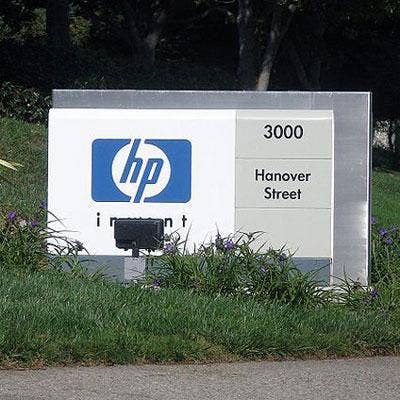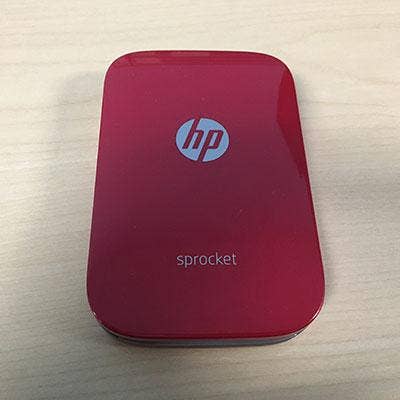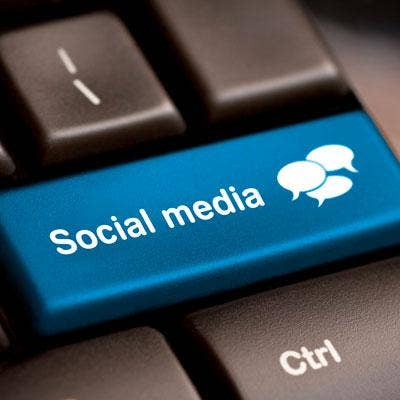HP CMO Lucio On Reinventing HP's Brand, Why Diversity Is A 'Business Imperative,' And Helping The Channel Build A Business That 'Stands The Test Of Time'

The Reinvention Continues
HP Inc. is on a tear. Following the 2015 split of Hewlett-Packard that put PCs and printers under HP Inc., the company has adopted "keep reinventing" as a theme both for marketing its products and for transforming its own business. The strategy appears to be working: HP has achieved double-digit sales growth for the past four quarters in its personal systems business, while its printing business has grown in the past three quarters. For HP Chief Marketing Officer Antonio Lucio, that's evidence that the company's reimagined approach to marketing is paying off. The "new" HP has put a high priority on marketing that makes emotional connections with customers and that particularly appeals to millennials, Lucio said in an interview with CRN. In keeping with those themes, HP released commercials over the holidays that focus on the ability of HP products to create unique experiences and to bring families together even amid political differences.
All of the marketing efforts are ultimately bolstering HP's brand and helping channel partners to do more business in selling HP products, Lucio said. "If we're able to build a strong, vibrant, differentiated and preferred brand," he said, "our channel will be able to build a business that stands the test of time."
What follows is a portion of Lucio's recent conversation with CRN.

How have you approached marketing differently as HP Inc.?
We made some very fundamental, strategic decisions when we separated the company. First and foremost, we needed to appeal to the millennial target. We believe around 60 percent of the IT decision-makers are millennials -- older millennials, mostly. And we needed to capture their imagination. The second big strategic shift was anchoring every message in the reinvention promise. 'Keep reinventing' has become an operating system for the company -- the filter by which we look at all our products and services, and also everything that we do from our communications standpoint. The third piece is building the capability on digital media. Today, for example, we're spending about 73 percent of our marketing dollars globally through digital media. And we needed to build the internal capabilities to ensure that we had the right analytics and the right stack for programmatic buying, and then to ensure that we had the right tools for measuring performance. And then the last part was, building stronger emotional connections for our products.

How has focusing more on emotion influenced your marketing?
When we started two and a half years ago, if I was to summarize the state of our brand, [it] would be described as very rational, but not with a lot of emotional connection and affinity. The brand would be described as great performance, reliability, great value for money. Not a lot of love. Not a lot of, 'This is my favorite brand.' So over the last two and a half years, and through the 'Keep Reinventing' platform, we focused on building stronger emotional connection and affinity for our brand. So when you take a look at the work that print has been doing in products like Sprocket, the work that we're doing in commercial in terms of personal systems, the work that we're doing in graphics, the work that we're doing in 3-D -- it all has a very strong rational foundation. But it is expressed in ways so that we can build that emotional connection with our customers.

How has this work ended up improving things for channel partners?
In one of the first screenings that I attended, at one of our annual events where we have our channel partners, at panel after panel they were saying, 'We need our customers to love your brand. We need more and better demand generation. We need your communication to showcase all the wonderful and differentiated benefits that your products actually have.' So, by bringing communications that resonate emotionally with the consumer or with our commercial customers, it actually helps drive the revenue of the channel. So we heard that loud and clear two and a half years ago, and we've been working very hard to ensure that it works. And when you take a look at things like Net Promoter Score, as well as the strength of the brand, those numbers will indicate that we are moving the brand in the right direction. ...
The mission of the marketing function within HP and more broadly is to ensure that we are building a brand that stands the test of time. It is not because we want to build a brand for the sake of building a brand, it's because we want to build a business that stands the test of time. And what we know is that if we're able to build a strong, vibrant, differentiated and preferred brand, our channel will be able to build a business that stands the test of time.

Your emphasis on emotional connection is pretty strong in some of your recent commercials. What are you hoping people will take away about HP from them?
What you saw are what we call top-of-funnel communications, which are aimed at generating awareness of a product category. And to do it within the context of relevant emotional territories. Then, throughout that journey, we will hit that same customer that already clicked on those beautiful films with more rational [appeals]. And then we will hopefully encourage them to click to buy in our channel's network. The two films that you saw for the holiday period are aiming at leveraging two very important pieces of insight. On the personal system one, which is the young woman who is creating this wonderful environment for the little girl in front of her house, it's that millennials are beginning to get tired and bored of the algorithm-based life that they're living in the digital world. ... This whole notion [that] everything is very predictable is something that they're getting tired of. They're craving a sense of wonder, surprise, magic. They see themselves as makers of these wonderful experiences. So what that film did is, [it showed an HP] personal system being used to actually create an experience full of wonder for this little girl, which was magical.

What was the thinking behind the commercial about a family having a political argument during the holidays?
When you take a look at the Sprocket film called 'Togetherness,' that was actually I think a very important piece of work that we did following the election of the president. We were seeing that all reputable third-party research has proven that the country is going through its most polarized period in history. [So] we said, if that's the environment, are there still values that people hold sacred that unite us? And is there a relevant role for the brand to play? Should we go with one national message, or are the differences between red and blue states, between conservatives and liberals, so dramatically different that we need two different messages for the same product? And from a marketing standpoint that's a very important question to address. ... And what we found was that despite all the differences that there are, there are some things that we all continue to hold sacred, that continue to hold us together. Those are, we all want a better life for our kids. We want them to have better education and better professional opportunities than we did, so they can live a better life.

And you see an opportunity for your Sprocket printer to bring people together?
Understanding that the positioning of our printer business is, 'Let's reinvent memories through the tangible,' there was a beautiful story to be told. Which is, regardless of what you feel -- and that film doesn't take a stand, you don't know who wins the argument -- reminding people of what's important, through memories, is more important than ever. And that's what that film tried to accomplish.

What role do you think brands like HP have to play during a polarized period in the U.S.?
We believe that brands can transform culture. There is a huge opportunity for channel partners and big brands in capturing a need, which is [that] customers want their brands to be reflecting values. … In this moment of fragmentation and extreme polarization, where politicians around the world can win elections by preaching into the base and creating division, they can afford that because they run only every four or six years. When you're a big brand, or you're running a business like the channel, that earns their trust and preference every day, you can not afford to do that. You have to preach to those values that unite us as human beings. And I believe that standing for those values will be an amazing opportunity for ourselves, for our channel, to build businesses and brands that stand the test of time.

Where is the best ROI for HP partners in terms of how to spend marketing dollars?
What we've found is that the best results happen when you are able to align a partner's priority with our priorities -- where we can leverage their calendar with our products, and where we can leverage their initiatives and their priorities with our funding. When that happens, magic happens. So moving into 2018 and beyond, we will increase our focus in terms of joint planning, to ensure that we are able to achieve their targets. Because when we achieve their targets, ours happen as a result. That means ensuring that the people who are servicing our accounts are taking a bit of a longer-term approach -- [that] these are the priorities we expect to have for the next 12 months, these are the key dates that we are going to be pursuing. And then ensuring that our products, our offerings, are present in those dates and are aligned with those priorities.

How much value do you see in HP partners doing inbound marketing and social media themselves?
What we've been able to find with our data is that digital marketing is incredibly effective, as long as you're using it wisely -- following the needs identified in the customer decision journey. When that happens, there are very specific uses for search, there are very specific uses for banner, and there are very specific uses for social media. And again, we have best practices in all of this, and in many instances we have shared those best practices with our channel partners. Because to the extent that they're more effective with their marketing dollars, we will be more effective in selling more products.

Do you feel like the tech industry is being aggressive enough in pursuing more diversity?
Diversity and inclusion for HP is a business imperative. It starts from our board of directors -- we have the most diverse board in tech. Over 40 percent of our board members are women or people of color. It then translates into the priority of our CEO, Dion Weisler. Dion is Australian and he's lived all over the world -- in China, in several countries in Europe, and now in the United States. And he believes, as we do, that the only way that you're going to be able to maintain an effective, innovation-driven agenda is by having teams that clearly represent the communities that we serve. When it comes to our marketing team, we believe in that as well. So today, 60 percent of the people in the marketing organization are women -- [as are] 52 percent of the managers and 50 percent of the top 10 global marketing leadership roles. Importantly, 30 percent of those top leaders are people of color.

So you have been trying to lead by example?
We also, a year ago, issued a challenge to all of our advertising agencies around the world. We needed to increase the percentage of women working on our account, we needed to increase the percentage of women in senior leadership roles, and we needed also to increase the percentage of people of color in our accounts. We allowed the different agencies to set their own targets, but we monitored their performance on a quarterly basis directly with the CEOs. Twelve months later, we were able to report back the number of women working globally in our account went from 40 to 60 percent. And importantly, women in leadership roles went in many of the agencies from zero to 50 percent. We made progress on [the percentage of] people of color in two out of our five agencies, but three of them fell short on the objectives that they see for themselves on people of color. ... Now that we have five quarters of data, we are going to be able to actually build a meaningful, quantitative-based business case for diversity.